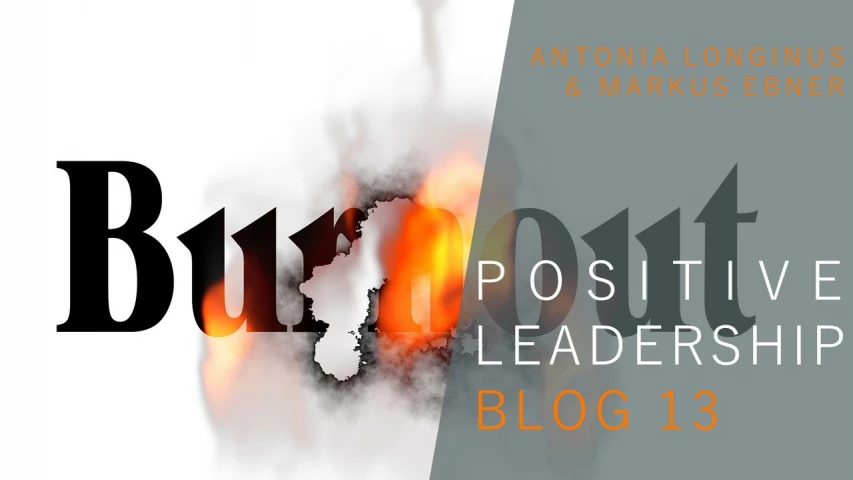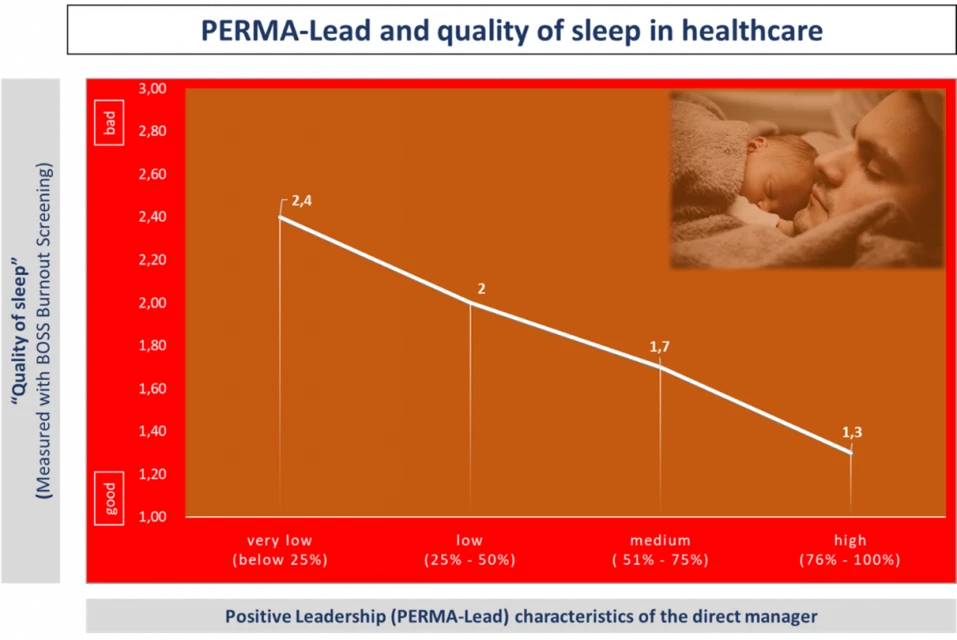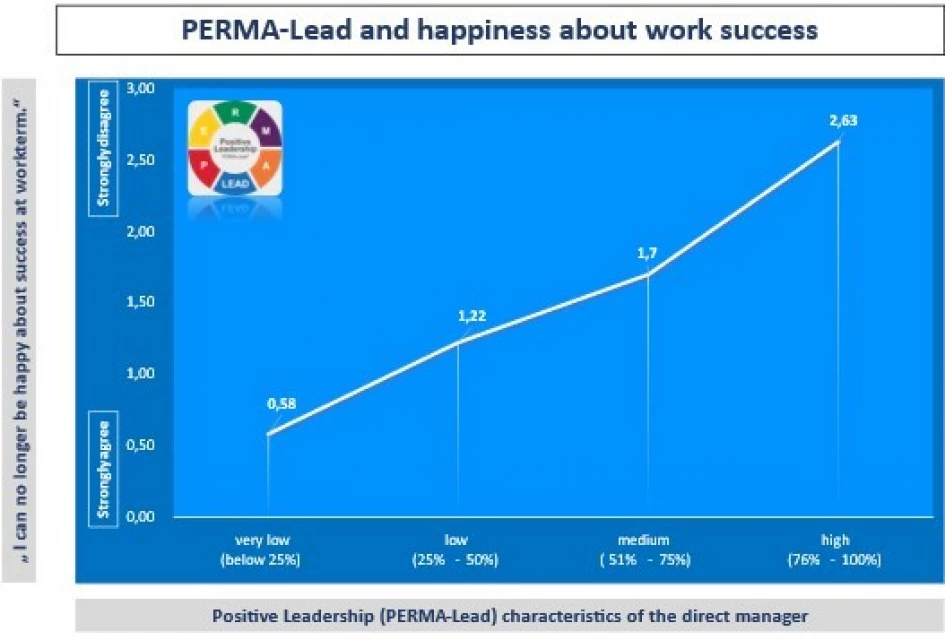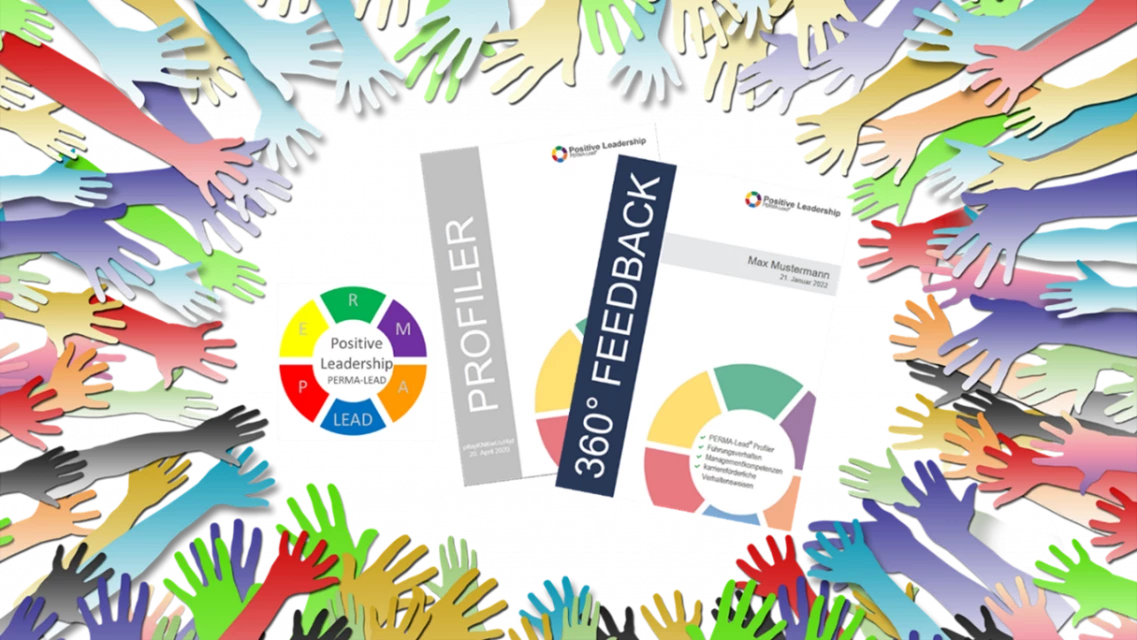
Study in Social and Health Care in Corona Times: How leadership influences the risk of burnout

Dr. Markus Ebner , MSc.
Organizational Psychologist/Founder of the PERMA-Lead Model
Antonia Longinus
Psychologin
Personalentwicklerin bei Neuroth
A meaningful work that connects you with people and helps others – This is the most important reason why many people choose a career in the health and social care system, a vital element of solidarity in our modern society.
The Corona pandemic has now created a new visibility for these professions. Caregivers are more strongly valued as being important to the social system. At the beginning of the pandemic, people in many European countries expressed their gratitude to those who continued to provide important care, including, of course, medical, nursing, and social care professionals. The nice gestures such as regular applause from balconies and individual expressions of gratitude appeared, however, for many social and health care workers as almost cynical. For too long, they have been deprived of adequate social and especially material compensation.
Every day, workers in the social and health care sector endure the significant stress of dangerous materials and radiation, loud noise, time pressure, the massive need to work overtime, irregular shift work, and emotionally stressful experiences such as deaths. The current personnel shortages only intensifies the pressure. A vicious circle develops: the increasing workload results in fewer people wanting to take up a caregiving profession and then a growing shortage of qualified personnel, however, leads to a heavier workload. In addition to this dilemma, a study of Austrian secondary school graduates revealed that most of the students considered caregiving professions as very unattractive.
Burnout and stress – an interaction between personality and underlying conditions
The professionals of health and social services have an above-average level of psychological stress in their everyday life. The burnout syndrome can be seen as the final stage within the stress process and, with its massively debilitating symptoms, can lead to people becoming completely unable to work. The employees in the helping professions have a significantly higher risk of burnout. Furthermore, they also have an increased risk of generally developing mental illnesses. These caregiving professions have more depressive symptoms as indicated by higher prescription rates of antidepressants and also a trend to higher levels of substance abuse.
Psychological research reveals that certain personality traits put some people at a higher risk of burnout than others. Nevertheless, these studies fail to consider external factors, such as the workplace. Scientific research also shows that work-oriented prevention measures have a more stable and long-term positive impact on the mental health of employees than simply a person-oriented approach. Organizational culture therefore plays an important role in preventing burnout! Numerous studies have also shown that leadership style has an important impact on organizational culture.
Burnout – not an illness but a challenge for everyone
Burnout not only means immense suffering for those directly affected, but also has serious consequences for employers, the healthcare system, and consequently for the entire society. About 80% of all Austrians suffer from stress; about one million people are considered vulnerable to burnout – and this number is increasing because of the pandemic. The highest incidence of burnout can be found in the health and social care sector, where about 30% of employees are at risk of what is sometimes called "the most widespread illness". Burnout unfortunately does not fit conventional definitions of a psychological disorder, at least according to the current standard of psychological diagnostics. Because symptoms overlap with other illnesses, scientific research has found it difficult to define a unique condition. As a result, the syndrome does not appear in the World Health Organization’s International Classification of Disease (ICD) or in the Diagnostic and Statistical Manual of Mental Disorders (DSM) developed in the USA.
Nevertheless, the World Health Organization notes burnout’s increasingly important socio-political relevance and lists it as among the "factors that influence one' s health and lead to use of the health care system". For example, the German Federal Association of Company Health Insurance Funds reports that disability related to burnout increased 18-fold in the years between 2004 and 2012.
Positive Leadership instead of sleeping pills!
As a behavior-oriented leadership style, Positive Leadership with the PERMA-Lead approach seeks to actively increase the well-being of employees and increases opportunities for workers to use and contribute their strengths. PERMA-Lead stands for five specific aspects of leadership (positive emotions, engagement, relationships, meaning, and accomplishment), whose positive effects have been confirmed by numerous studies that also consider key performance indicators. Positive leaders create an environment that strengthens a multitude of personal resources. This has a significantly positive effect on mental health and reduces burnout among employees. A few years ago, we conducted a study in the hotel industry that showed that employees working with a positive leader suffer from significantly less stress at work than those whose leader has an adversarial leadership style.
In our study conducted at the beginning of the Corona pandemic, we considered the connection between Positive Leadership and the burnout symptoms of employees in the social and health care sector. In previous research, we could determine that the health and social sector clearly has below-average levels of Positive Leadership – which was (unfortunately) confirmed again by our current study. Almost 200 people from the health and social care sector took part in our survey that asked employees for a detailed description of their leader’s specific behavior and collected other relevant data to diagnose the extent of individual burnout risk.
The results clearly indicate that the risk of burnout in the health and social sector for employees with a positive leader is more than 50% (!) lower than employees with leaders who do not use the elements of Positive Leadership. Therefore, high levels of worker burnout clearly relate to low levels of managers practicing Positive Leadership behavior (PERMA-Lead). Or to put it another way: low to nonexistent Positive Leadership behaviors doubles the measured risk of burnout. The study thus confirmed that the prevailing leadership style has clear links to burnout and thus also impressively shows how a positive leadership style can significantly contribute to the mental health of employees.
We dived even “deeper" within the study. Since sleep quality serves as a relevant factor in maintaining health, we were also interested to what extent the leadership style relates to the perceived sleep quality. These are the results:
Those employees with a Positive Leader obviously enjoy a significantly better quality of sleep than their colleagues. Restful sleep is important for staying mentally and emotionally strong. Scientific research has shown that sleep problems lead to a variety of impairments, an increase in irritability, and a decrease in responsiveness, alertness, and problem-solving abilities. Long-term sleep disorders increase the risk of physical or mental illnesses such as cardiovascular diseases or depression – and with them the risk of burnout. Leadership can have a significant positive influence here, as our study results show.
Being able to perceive positive emotions – an important component of health
Most of us know that in stressful times, we are less able to create space for positive emotions. Nevertheless, positive psychology shows how important these emotions are! Not only do they have psychological effects such as a generally increased sense of well-being or a better ability to concentrate, but they also have a demonstrable effect on other measurable factors such as our immune system. Stress is part of life, and so is the fact that we cannot always have positive emotions. However, stress becomes a problem when even accomplishments can no longer trigger positive emotions. The Australian researcher Peggy Kern conducted a study indicating that among the most effective factors to prevent burnout is to positively notice the achievement of goals ("Accomplishment" – the letter A in the PERMA model). Also, consciously acknowledging our successes makes it clear that we can positively affect our own lives. A burnout mindset loses this ability. People with burnout tend to feel like a powerless scrap of wood aimlessly floating down a river.
In our study, we therefore also analyzed the extent to which the Positive Leadership style influences how people feel about their achievements at work. The results speak for themselves:
The more a leader enacts Positive Leadership, the more the employees can enjoy their successes. This is where the positive loop starts: The more joy, the less risk of burnout. And once again, this shows the leader’s relevant influence, especially in this very challenging time for the health and social care system due to the pandemic.
What to do?
The detailed analysis of the study shows that the two areas "Relationships" and " Engagement" have a key function in leadership. This study clearly indicated that employees have very high expectations for the PERMA Lead factor "Relationships". More specifically, a leader should actively work to ensure that people within a team support each other, both by serving as an example and expecting team solidarity. Leaders have the mandate to establish appreciative, trusting, and supportive interaction within the team. The appropriate measures can vary greatly from team to team and should ideally be discussed together with the team. For example, it can be beneficial to spend time together away from everyday work life and use team-building activities to strengthen the bonds between workers. Joint supervision within the team also helps create a sense of "us". Various studies empirically prove that team supervision and external training opportunities have a significant effect on preventing burnout among hospital employees.
Another factor that proved to be particularly relevant in the study was "Engagement". This means that leaders allow individuals to develop, recognize their strengths, and support them in a goal-oriented manner. The study shows that leaders generally pay less attention to this behavior, while employees have exceptionally high expectations for this type of leadership.
Engagement is the PERMA lead factor that is significantly negatively related to burnout – as our results show. This means that the factor with the lowest average score seemed to have the greatest predictive power – an inauspicious situation.
Effective leadership therefore means focusing intensively on the employees' strengths and, as far as possible, assigning tasks that correspond to their profile of personal strengths. Particularly in a work environment in which patients or clients always come first, employees should also feel that their managers notice them. The study’s data suggest that the more strongly an organization engages with the staff, the less frequently burnout symptoms appear among employees. Managers that consciously and regularly focus on employees' strengths also have the positive effect of improving the employees’ general competences.
In order to specifically measure this Positive Leadership behavior, various test instruments are available for real-life leadership situations and also for organizations (www.perma-lead.com). Currently, more than 600 certified PERMA Lead Consultants® provide professional support in seminars, coaching sessions, and organizational development processes for the continued development of more Positive Leadership.
The next study after this study...
The results clearly show that PERMA-Lead as a Positive Leadership style also brings significant value to the system-relevant health and social care sector. And this added value will benefit not only the employees but also the organization.
But what about the patients? Our findings have caused us to be curious – and so we will soon be launching the next study to find out what influence the positive leadership style has on the well-being of the clients of caregivers. And we' re already looking forward to share the results with you in a future blog!
Über die Autor*innen
Dr. Markus Ebner, MSc.
Organizational Psychologist/Founder of the PERMA-Lead Model
He teaches leadership at several universities and colleges, has written numerous books and publications in this field, and has additional training in coaching, supervision, crisis intervention, social pedagogy, and organizational and team development. In addition to his more than 20 years of work as a trainer, coach and consultant, he is the founder of the PERMA Lead Model and, as one of the renowned European experts on Positive Leadership, is on the Board of Directors of the Austrian Umbrella Association for Positive Psychology. In 2021, he was awarded the Exemplary Research to Practice Award by the World Positive Psychology Association (IPPA) for his work.
Antonia Longinus
Psychologin
Personalentwicklerin bei Neuroth
Antonia Longinus is a psychologist and works in personnel development at Neuroth. She was lecturer for business and organizational psychology at the University of Klagenfurt and conducted research on Positive Leadership in social and health care as part of her master's thesis. In her company, she is working, amongst other things, in the area of leadership development as well as implementing a strength-oriented competence management. Linking theory and practice and thus bringing the research findings of Positive Psychology into everyday business life is a matter close to her heart. Since November 2021, she also is a certified PERMA Lead Consultant.







